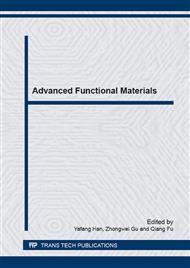p.354
p.359
p.367
p.373
p.379
p.385
p.390
p.396
p.401
Controlling Pore Size of Tissue Engineering Scaffolds Fabricated by Electrospinning and Phase Separation
Abstract:
Electrospinning is a versatile and efficient technique for fabricating nanofibrous tissue engineering scaffolds. However, problems such as small pore size of electrospun scaffolds have limited their applications for tissue regeneration. It is important to modify/improve existing electrospinning techniques for fully realizing the potential of both the electrospinning technology and electrospun nanofibrous scaffolds. To increase the pore size of scaffolds prepared by conventional electrospinning technology, in the present study, a hybrid fabrication technique by combining electrospinning with phase separation is utilized. Polymer solutions were made using mixed solvent of (a) DCM and DMF or (b) chloroform and DMF and electrospun fibers were deposited in ice water, ice methanol or liquid nitrogen. It was shown that for poly (ε-caprolactone) (PCL) scaffolds, the hybrid technique could maintain the nanofibrous structure for scaffolds and control the pore size in scaffolds. As compared with pore sizes in PCL scaffolds made by conventional electrospinning, pores were larger in PCL scaffolds produced by the hybrid technique.
Info:
Periodical:
Pages:
379-384
Citation:
Online since:
March 2015
Authors:
Price:
Сopyright:
© 2015 Trans Tech Publications Ltd. All Rights Reserved
Share:
Citation:


